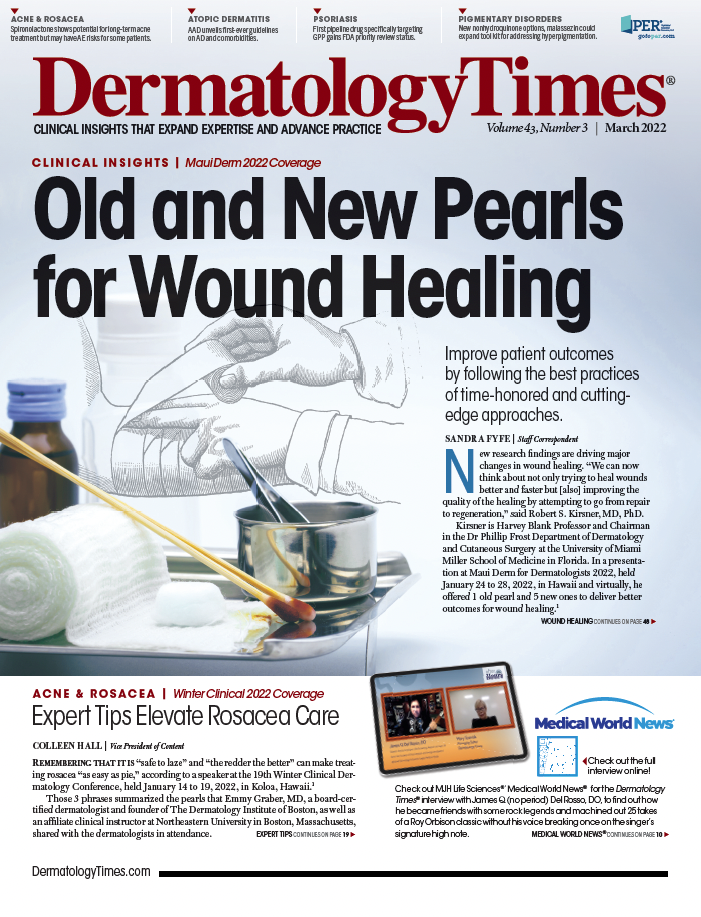- Case-Based Roundtable
- General Dermatology
- Eczema
- Chronic Hand Eczema
- Alopecia
- Aesthetics
- Vitiligo
- COVID-19
- Actinic Keratosis
- Precision Medicine and Biologics
- Rare Disease
- Wound Care
- Rosacea
- Psoriasis
- Psoriatic Arthritis
- Atopic Dermatitis
- Melasma
- NP and PA
- Skin Cancer
- Hidradenitis Suppurativa
- Drug Watch
- Pigmentary Disorders
- Acne
- Pediatric Dermatology
- Practice Management
- Prurigo Nodularis
- Buy-and-Bill
Publication
Article
Dermatology Times
IL-23 vs IL-17 Inhibitors: Why and When?
Author(s):
April Armstrong, MP, MPH, and Erin Boh, MD, PhD, discuss the benefits of each inhibitor and the specific incidences of when to use them at Winter Clinical Hawaii.
Interleukin (IL) -23 and IL-17 inhibitors are known for their distinct advantages when treating inflammatory diseases. At the 2023 Winter Clinical Hawaii Dermatology Conference, April Armstrong, MD, MPH, professor of dermatology and associate dean of clinical research at the University of Southern California, and Erin Boh, MD, PhD, professor and chair of the department of dermatology at Tulane University School of Medicine, presented why and when clinicians should use an IL-23 or an IL-17 inhibitor depending on the scenario.
Armstrong reviewed the IL-23 inhibitors tildrakizumab, guselkumab, risankizumab, and ustekinumab. The 4 IL-23 inhibitors are known for their robust and long-lasting skin efficacy, there are very few injections per year, and each inhibitor has an overall good safety profile. Additionally, guselkumab, risankizumab, and ustekinumab have shown positive efficacy in the treatment of psoriatic arthritis.
Qualities of each IL-23 inhibitor include:
Tildrakizumab
- 4 injections per year
- Administered in office, so it can be billed as a “medical benefit” and will be covered by Medicare
- Long-term data shows 1/3 of patients achieve PASI100
Guselkumab
- 6 injections per year
- 83% of patients will remain clear at 5 years
- Super responder patients can extend their injections from every 2 months to every 4 months
Risankizumab
- 4 injections per year
- High medication persistence at 2 years compared to other IL-23s
- Obese patients may have a slightly decreased response
Ustekinumab
- 4 injections per year
- Positive efficacy in pediatric treating patients with plaque psoriasis
- 69% of pediatric patients with psoriasis achieved clear or almost clear at week 12
In her portion of the presentation, Boh examined the IL-17 inhibitors secukinumab, ixekinumab, and brodalumab. Boh also discussed the hopefully soon-to-be-approved bimekizumab. IL-17s should be considered first-line treatments because they are fast, reliable, durable, good in axial diseases, and approved down to age 2.
Secukinumab and ixekinumab have fast response rates of approximately 4 weeks, with patients remaining clear. Patients on brodalumab achieve PASI90 as early as 2 weeks. Each IL-17 has a durable response and efficacy is maintained, but secukinumab does have a slight drug drop-off compared to the others, although it is not significant enough to turn patients away.
The soon-to-be-approved bimekizumab blocks IL-17A and IL-17F, which is new compared to the currently available IL-17s. Studies have shown that there is an overexpression of IL-17F in patients with psoriasis, so bimekizumab may prove to be the most effective in helping patients achieve clearance and control their itch.
Reference
- Armstrong A, Boh E. IL-17 vs IL-23 blockers: Why & when? Presented at the 2023 Winter Clinical Hawaii Dermatology Conference; January 13-18, 2023; Kohala Coast, Hawaii.







